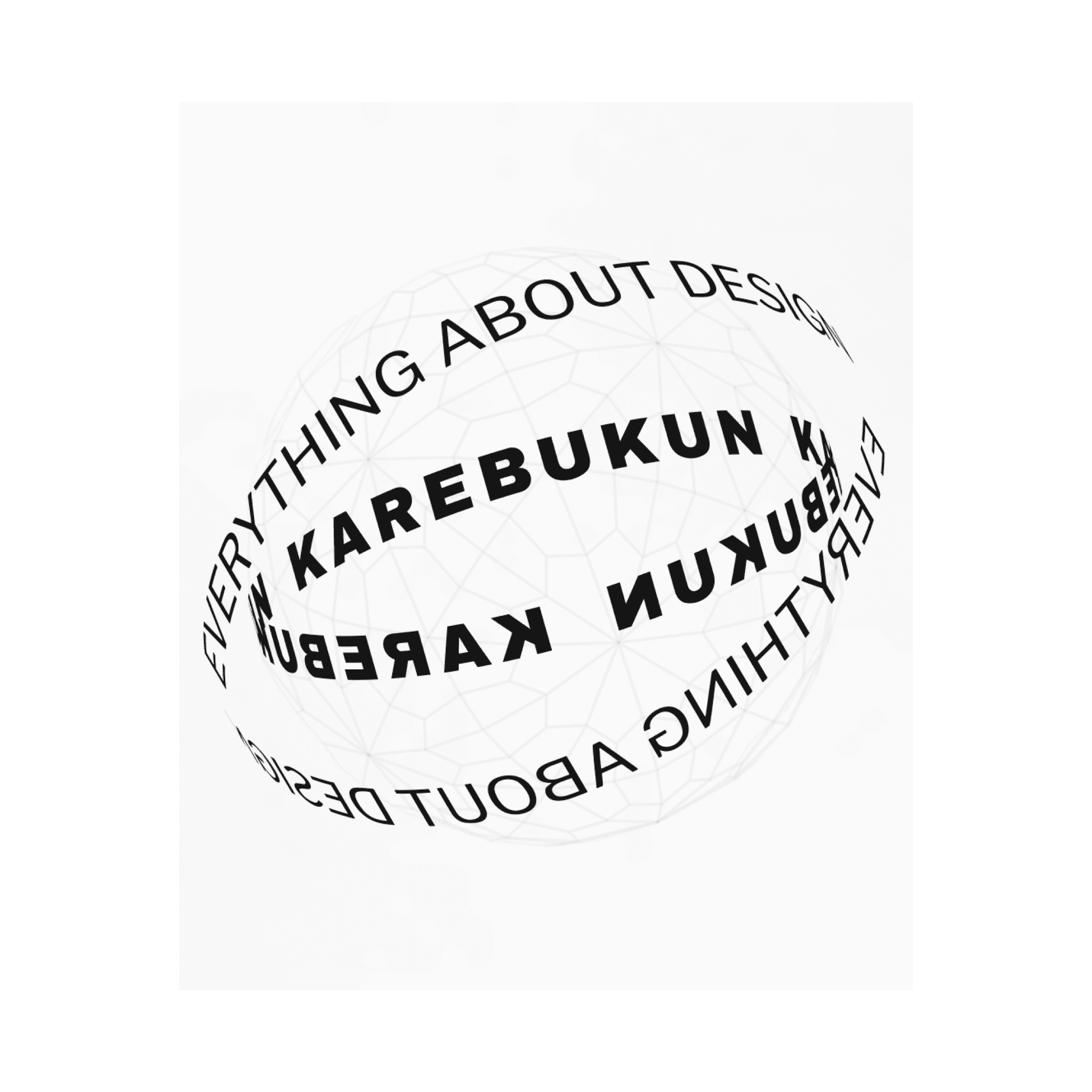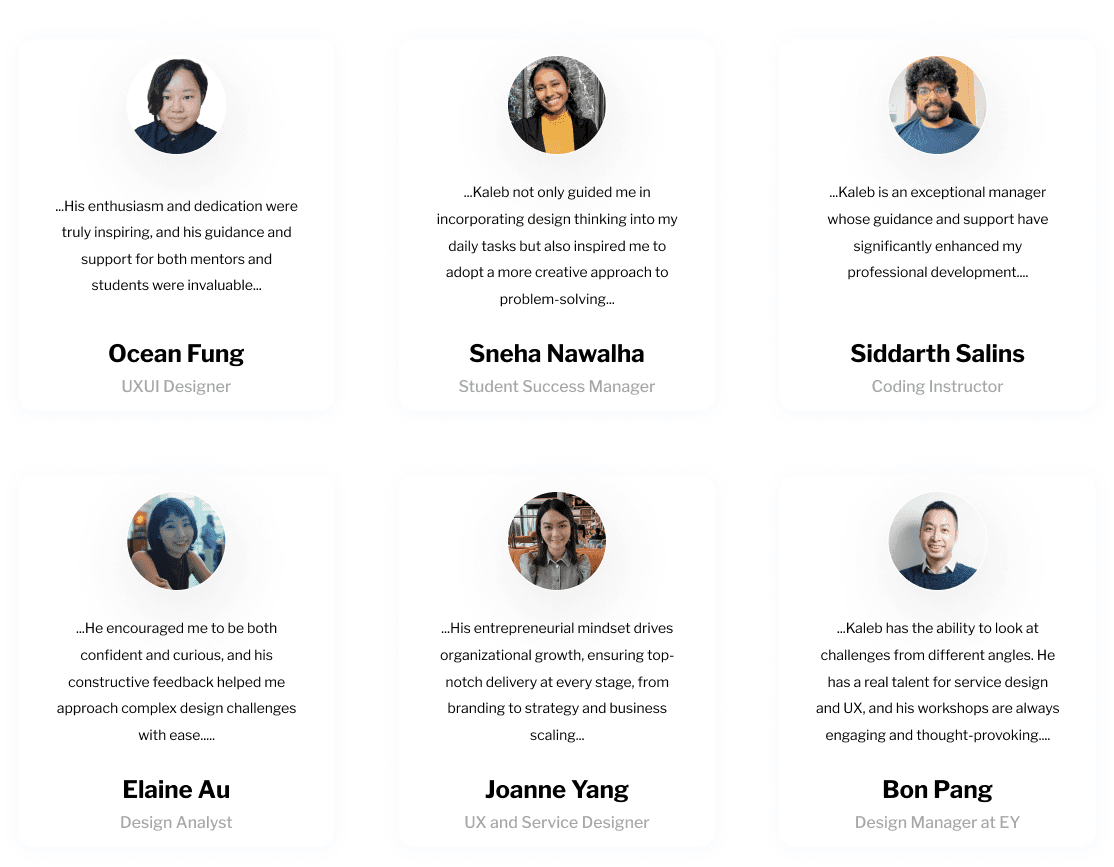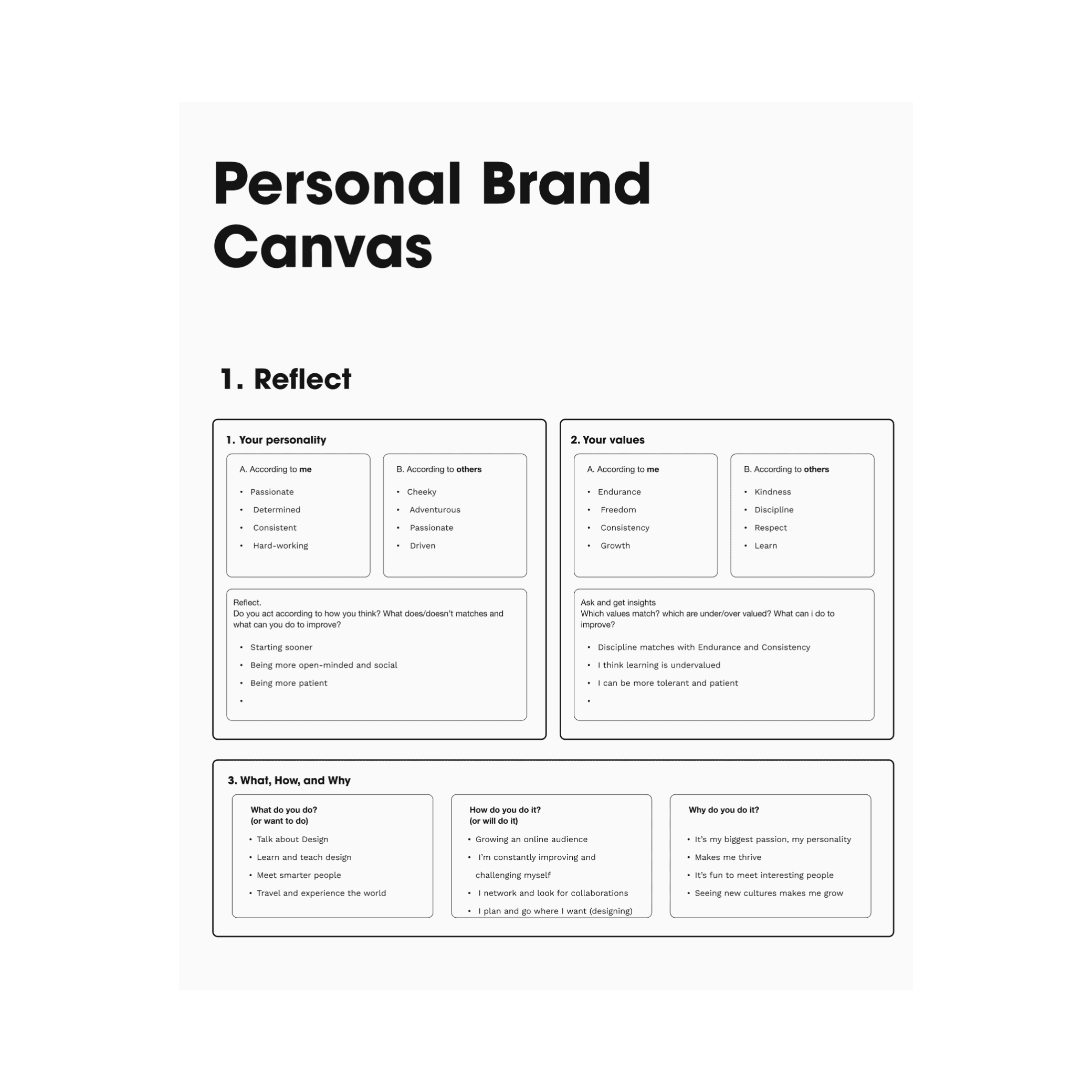Published
04 October, 2024
by
Kaleb Cardenas
Reflections on Leadership, Growth, and Design: Lessons from My Journey as CXO
As I’ve recently moved on from my role at Xccelerate, I wanted to take a moment to reflect on the lessons I’ve learned, the milestones I’ve reached, and the mindset I’ve developed over these pivotal years. My goal is to share genuine insights that might help other designers on their journey—whether you’re at the beginning of your career or striving to step into leadership.

The Road to Becoming CXO
My time at Xccelerate was defined by growth at every step. Starting as a Service Design Lead and UX Instructor, I was responsible for guiding teams and teaching aspiring designers. It wasn’t just about delivering projects or lectures—it was about creating impact, influencing change, and helping people grow through design.
As I transitioned to Head of Design, my role shifted from delivering outputs to enabling outcomes. I led teams that spanned multiple disciplines, influencing how design could be leveraged as a strategic tool for the business. It wasn’t always about being the best designer in the room, but about how to motivate, organise, and amplify the work of those around me.
Becoming CXO allowed me to take a broader perspective. I learned how design fits into the bigger picture—how it connects with business objectives, customer experiences, and long-term strategies. Leading a company’s entire experience strategy required a shift in mindset, from focusing solely on execution to thinking about long-term, systemic impact.

Lessons Learned
If you want to grow as a designer and a leader, you must embrace these principles:
1. Empathy is Everything
Designers often consider empathy a tool for understanding users, but it’s just as crucial in leadership. Empathy helps you lead with intention and influence others more effectively. When you can step into the shoes of your team members, clients, and stakeholders, you create trust and better communication. This leads to projects that are not just functional, but impactful.
In my experience, the best leaders understand that a design leader’s job isn’t to have all the answers but to guide teams toward the right questions. You have to listen to feedback from clients and your team and create a space where different perspectives can thrive.
2. Design Leadership is Service Leadership
One of my biggest lessons is that being a leader is less about having all the answers and more about serving those around you. The best leaders focus on enabling their teams to thrive. My role as CXO wasn’t about dictating solutions but about creating the conditions where my team could collaborate, experiment, and find the best paths forward.
As a designer, it can be easy to feel like you need to always lead from the front. But real leadership means stepping back and guiding your team toward the right solutions, giving them the support, resources, and trust they need to succeed.
3. Influence Without Authority
One of the most important skills I developed was the ability to influence decisions without having direct authority over every piece of the puzzle. As designers, we often work cross-functionally, where we may not always have the final say. Learning to communicate the value of design and building strong relationships with decision-makers can be just as important as the craft itself.
Your ability to frame design’s role in solving business problems, not just delivering outputs, will be key to moving into leadership roles. Influence comes from trust, and trust is built when people see how your work can make a real impact.
4. Stay Curious and Humble
One of the most underrated traits in design leadership is humility. No matter how far you’ve come, there’s always more to learn. During my time at Xccelerate, the landscape of design kept changing—new tools, methodologies, and expectations constantly emerged. The ability to stay curious and constantly upskill yourself can never be overstated.
I’ve worked with some incredible designers and business leaders who reminded me of this: the moment you think you’ve learned it all is the moment you’ve stopped growing. Whether you’re a junior designer or a CXO, curiosity keeps you agile, and humility keeps you grounded.
5. Delegate, But Don’t Detach
As you climb the ladder, you’ll need to learn how to delegate, but that doesn’t mean you should detach from the work. Early in my leadership roles, I realized that while it was important to give my team autonomy, it was equally important to remain connected to the design process. You don’t need to micromanage, but maintaining involvement allows you to offer valuable guidance and ensures the quality of work aligns with your vision.
For designers aspiring to move into leadership, know that delegation doesn’t mean stepping away entirely—it means empowering others while still being present to mentor and steer when needed.

Growth Mindset: The Key to Career Advancement
A growth mindset was at the heart of my experience as I transitioned through different roles. What does this mean in practice? It’s not just about believing you can grow—it’s about actively seeking out challenges that stretch your skills and taking risks, even when failure is a possibility.
In a fast-moving design environment, I learned that growth comes from being uncomfortable. Whether it was navigating new technologies, leading teams through ambiguity, or spearheading strategic projects with no clear roadmap, I found that discomfort often leads to breakthrough moments.
Here’s how a growth mindset helped me thrive, and how it can help you too:
• Embrace Failure: In design, failure is inevitable. What’s important is what you do after. Instead of fearing mistakes, I started viewing them as learning opportunities. Fostering a team culture where failure was seen as part of the creative process led to greater innovation.
• Seek Feedback Relentlessly: Feedback isn’t just something you give—it’s something you should actively seek out. I made it a habit to ask for feedback from peers, team members, and stakeholders. This allowed me to continuously refine my leadership style and my approach to solving problems.
• Develop a Long-Term Vision: Early in your career, you may focus on the immediate deliverables, but as you advance, you need to think bigger. Leaders need to look at how their decisions today will impact the business and customer experience in years to come. Developing this forward-thinking mindset helped me align design strategies with business goals.
For anyone reading this who’s aiming to advance in their career, keep this in mind: growth doesn’t happen in your comfort zone. You need to actively seek out opportunities to challenge yourself and embrace the discomfort that comes with learning something new.
What’s Next
As I close this chapter, I’m excited to start a new one. Since leaving Xccelerate, I’ve been working on personal projects that I’m deeply passionate about. I’m preparing to launch a few soon; It’s still in the early stages, but I’m excited about where it’s headed. I’ve also been sharpening my personal brand and learning new skills to prepare for the opportunities ahead.

Being based in Madrid, Spain, I’m surrounded by a community of super-talented designers and a culture that embraces design as a driver for innovation. I’m eager to dive into new challenges and collaborate with incredible minds to shape the future of design.
I’m incredibly thankful for my time at Xccelerate. The opportunity to grow as a designer and leader, to work alongside brilliant minds, and to drive impactful projects has been a transformative experience. The lessons I’ve learned here will continue to guide me as I move forward.
Here’s to new challenges, more growth, and exciting opportunities ahead.
— Kaleb Cardenas
Published
04 October, 2024
by
Kaleb Cardenas
Reflections on Leadership, Growth, and Design: Lessons from My Journey as CXO
As I’ve recently moved on from my role at Xccelerate, I wanted to take a moment to reflect on the lessons I’ve learned, the milestones I’ve reached, and the mindset I’ve developed over these pivotal years. My goal is to share genuine insights that might help other designers on their journey—whether you’re at the beginning of your career or striving to step into leadership.

The Road to Becoming CXO
My time at Xccelerate was defined by growth at every step. Starting as a Service Design Lead and UX Instructor, I was responsible for guiding teams and teaching aspiring designers. It wasn’t just about delivering projects or lectures—it was about creating impact, influencing change, and helping people grow through design.
As I transitioned to Head of Design, my role shifted from delivering outputs to enabling outcomes. I led teams that spanned multiple disciplines, influencing how design could be leveraged as a strategic tool for the business. It wasn’t always about being the best designer in the room, but about how to motivate, organise, and amplify the work of those around me.
Becoming CXO allowed me to take a broader perspective. I learned how design fits into the bigger picture—how it connects with business objectives, customer experiences, and long-term strategies. Leading a company’s entire experience strategy required a shift in mindset, from focusing solely on execution to thinking about long-term, systemic impact.

Lessons Learned
If you want to grow as a designer and a leader, you must embrace these principles:
1. Empathy is Everything
Designers often consider empathy a tool for understanding users, but it’s just as crucial in leadership. Empathy helps you lead with intention and influence others more effectively. When you can step into the shoes of your team members, clients, and stakeholders, you create trust and better communication. This leads to projects that are not just functional, but impactful.
In my experience, the best leaders understand that a design leader’s job isn’t to have all the answers but to guide teams toward the right questions. You have to listen to feedback from clients and your team and create a space where different perspectives can thrive.
2. Design Leadership is Service Leadership
One of my biggest lessons is that being a leader is less about having all the answers and more about serving those around you. The best leaders focus on enabling their teams to thrive. My role as CXO wasn’t about dictating solutions but about creating the conditions where my team could collaborate, experiment, and find the best paths forward.
As a designer, it can be easy to feel like you need to always lead from the front. But real leadership means stepping back and guiding your team toward the right solutions, giving them the support, resources, and trust they need to succeed.
3. Influence Without Authority
One of the most important skills I developed was the ability to influence decisions without having direct authority over every piece of the puzzle. As designers, we often work cross-functionally, where we may not always have the final say. Learning to communicate the value of design and building strong relationships with decision-makers can be just as important as the craft itself.
Your ability to frame design’s role in solving business problems, not just delivering outputs, will be key to moving into leadership roles. Influence comes from trust, and trust is built when people see how your work can make a real impact.
4. Stay Curious and Humble
One of the most underrated traits in design leadership is humility. No matter how far you’ve come, there’s always more to learn. During my time at Xccelerate, the landscape of design kept changing—new tools, methodologies, and expectations constantly emerged. The ability to stay curious and constantly upskill yourself can never be overstated.
I’ve worked with some incredible designers and business leaders who reminded me of this: the moment you think you’ve learned it all is the moment you’ve stopped growing. Whether you’re a junior designer or a CXO, curiosity keeps you agile, and humility keeps you grounded.
5. Delegate, But Don’t Detach
As you climb the ladder, you’ll need to learn how to delegate, but that doesn’t mean you should detach from the work. Early in my leadership roles, I realized that while it was important to give my team autonomy, it was equally important to remain connected to the design process. You don’t need to micromanage, but maintaining involvement allows you to offer valuable guidance and ensures the quality of work aligns with your vision.
For designers aspiring to move into leadership, know that delegation doesn’t mean stepping away entirely—it means empowering others while still being present to mentor and steer when needed.

Growth Mindset: The Key to Career Advancement
A growth mindset was at the heart of my experience as I transitioned through different roles. What does this mean in practice? It’s not just about believing you can grow—it’s about actively seeking out challenges that stretch your skills and taking risks, even when failure is a possibility.
In a fast-moving design environment, I learned that growth comes from being uncomfortable. Whether it was navigating new technologies, leading teams through ambiguity, or spearheading strategic projects with no clear roadmap, I found that discomfort often leads to breakthrough moments.
Here’s how a growth mindset helped me thrive, and how it can help you too:
• Embrace Failure: In design, failure is inevitable. What’s important is what you do after. Instead of fearing mistakes, I started viewing them as learning opportunities. Fostering a team culture where failure was seen as part of the creative process led to greater innovation.
• Seek Feedback Relentlessly: Feedback isn’t just something you give—it’s something you should actively seek out. I made it a habit to ask for feedback from peers, team members, and stakeholders. This allowed me to continuously refine my leadership style and my approach to solving problems.
• Develop a Long-Term Vision: Early in your career, you may focus on the immediate deliverables, but as you advance, you need to think bigger. Leaders need to look at how their decisions today will impact the business and customer experience in years to come. Developing this forward-thinking mindset helped me align design strategies with business goals.
For anyone reading this who’s aiming to advance in their career, keep this in mind: growth doesn’t happen in your comfort zone. You need to actively seek out opportunities to challenge yourself and embrace the discomfort that comes with learning something new.
What’s Next
As I close this chapter, I’m excited to start a new one. Since leaving Xccelerate, I’ve been working on personal projects that I’m deeply passionate about. I’m preparing to launch a few soon; It’s still in the early stages, but I’m excited about where it’s headed. I’ve also been sharpening my personal brand and learning new skills to prepare for the opportunities ahead.

Being based in Madrid, Spain, I’m surrounded by a community of super-talented designers and a culture that embraces design as a driver for innovation. I’m eager to dive into new challenges and collaborate with incredible minds to shape the future of design.
I’m incredibly thankful for my time at Xccelerate. The opportunity to grow as a designer and leader, to work alongside brilliant minds, and to drive impactful projects has been a transformative experience. The lessons I’ve learned here will continue to guide me as I move forward.
Here’s to new challenges, more growth, and exciting opportunities ahead.
— Kaleb Cardenas

